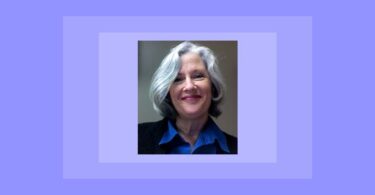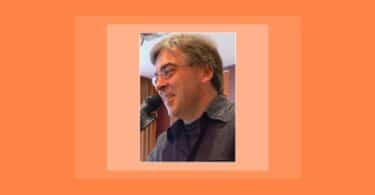
Rachael: Dear Hpathy readers, today we have with us in the Hot-Seat, Didi Ananda Ruchira, the founder-director of Abha Light Foundation and the principal of Abha Light College of Natural Medicine. So, let’s get started. Didi, how long have you been in Kenya?
Didi Ananda Ruchira: I came to Kenya in 1998, as an assignment from my parent organization, Ananda Marga, an international socio-spiritual organization.
Rachael: Yes, you’re usually dressed in orange robes, what’s with that?
Didi Ananda Ruchira: My calling is primarily as a sannyasini, or yogic nun. Orange is the colour we wear. I’ve been an Ananda Marga nun since 1977, when I was 23 years old, and have travelled quite a bit because of it. In 1995 I got interested to seriously study homeopathy and received my diploma under the British Institute of Homeopathy course. My posting in Kenya coincided with the time I was finishing my studies with BIH.
To me, it was quite providential in the Cosmic Flow to find myself here. My newly developed skills now had a focus – to popularize homeopathy and natural medicine as a solution to affordable health care in Kenya and, by extension, Africa. I was inspired by Indian homeopaths in this. In India, you find homeopaths in every town and village and any householder will have at least a Boericke in their house with a few choice remedies.
Rachael: That’s certainly quite an endeavour. What made you think you could do it? How did you get started?
Didi Ananda Ruchira: I didn’t think much about what I was getting into at the time. I just started what I started and it grew from there. In the beginning, with a small kit of about 60 remedies I started going out to some schools in Kenya’s low-income areas they call “slums”.
The slums are the poorest urban areas where people live in mud and iron-sheeted structures. Often there’s no sewage system, no toilets, no electricity, little water supply, few social services. With the permission of the parents and principals, I treated the children. Later I extended these mobile clinics into the community. By the year 2000 I rented space and opened my first permanent clinic in Kariobangi North slum.
Rachael: How did the college start?
Didi Ananda Ruchira: Once I started the clinic, I thought “Better to train a hundred people who’ll treat thousands, than to just run my own clinic.” So I got interested in training people in homeopathy. Around the same time in the year 2000, some people approached me to teach them what I knew.
“How simple” I thought! I felt that homeopathy was ideal for a lay practitioner. If I could learn it, then others could too! I thought I could just teach them a bit of homeopathic first aid. But after some time, I realized that just treating a cold or a fever doesn’t suit the situation.
The people in my mobile clinics were suffering from much more dangerous diseases like AIDS, syphilis, gonorrhea, malaria, TB. Once you start treating, you can’t just tell a patient, “Oh! I don’t know about that, go somewhere else.” So I ended up teaching a full basic course, though I was barely beyond my own training.
Then another group came, then another. My informal training program grew (and my teaching skills likewise grew) to a more extensive program until we renamed ourselves as the Abha Light College of Natural Medicine.
Rachael: You mentioned “affordable medicine”. That seems odd. Many homeopathic projects around the world give free medicine. Aren’t you treating people for free?
Didi Ananda Ruchira: Financial aid is a double edged sword. There is charity and there is sustainable development. Charity is dangerous because it’s ultimately unsustainable. It creates a “beggar mentality” in the society. If done properly, aid for sustainable development will create self-reliance for the community.
If I was just a foreigner visiting “those poor Africans”, I might consider giving free medicine. But if one is to create a true base for the community, then the community must be able to support it and not depend on charity and aid. And if one is to create a true foundation for homeopathy to take root in a country, then one must create a profession for the locally trained homeopaths.
They too have to be able to earn a living and sustain themselves. So we’ve established that patients should pay something, even if a little. Overall, homeopathy is the cheapest medicine in the world, not only because they are cheap to make, but also because most often, they cure.
The cost to the patient is far less than if they go through the conventional (allopathic) system. At the end of the day, the aid will dry up. Charity projects will close. But self-reliant projects will be able to empower people to manage their own lives.
Many people have a wrong ideas about Africa. The news media paints Africa in a one sided way. While it’s true that poverty and corruption are rampant, it’s not the whole picture either. The people of Kenya are vibrant and the economies are struggling to grow. The middle class is also growing. The capital of Kenya has got all the modern technology and conveniences available. Nearly every Kenyan has a mobile phone nowadays.
Abha Light Foundation is somewhere in the middle between aid and community development. We still depend a lot on donations from abroad to keep the core work going (administration, training, research, etc). But we encourage the clinics and homeopaths to be self-reliant.
Rachael: Is there any diseases in particular that you focus on?
Didi Ananda Ruchira: HIV-AIDS and Malaria are a top priority for Abha Light. No doubt there are “the usual” kinds of chronic diseases in Kenya as well as a lot of acute diseases. But these two killers overwhelm the population, and dealing with them effectively is a must.
Rachael: Do you have any experiences you can share with us?
Didi Ananda Ruchira: When I first arrived in Kenya in 1998, I had no idea about Kenya or Africa. However soon it was given over to me by my mission (Ananda Marga) supervisors that I will nurse one of my sannyasini sisters, a Kenyan who was then working in Congo.
My supervisors told me, “Don’t tell anyone, but she has AIDS. Don’t even tell her. She’s coming back to die, we want you to take care of her.” She had been infected long before she became a “Didi” (sister). This was at a time when the shame/ stigma was so strong, you couldn’t even mention the word AIDS. AIDS was still cloaked in secrecy in Kenya.
I was still an untried student of homeopathy, and quite incapable of doing anything to help her. It was altogether a shocking and life-changing experience to watch her last six weeks of life, to see the ravages of AIDS take its toll.
There was nothing we could do. Even more shocking was the cost of medicine. We, as a mission, couldn’t afford it then, as 60% of the Kenyans were living below the poverty line. It was then I knew I had to find an affordable, indeed cheap, solution for AIDS. How very naïve I was, to think I could take on the scariest disease in Africa!
Over time I researched and tried out a lot of things in both homeopathy and natural medicine. By 2003 I put together that knowledge in a book called “Great Health, Naturally!” This is a great little handbook of natural medicine and nutritional information for any Positively Living person (a person with HIV) to self-treat with foodstuffs available in Kenya, in Africa.
Rachael: What’s your experience about homeopathy and HIV?
Didi Ananda Ruchira: I’ve tried many kinds of remedies, many styles of treatment from polypharmacy to classic. I’ve tried different “single bullet” epidemic remedies. What I found, was that practically any thoughtful system will work. My own approach remains somewhat in the realm of polypharmacy. I was originally influenced by Jonathan Stallick’s book “Aids: The Homeopathic Challenge” and I still work somehow along those lines.
Depending on what is presented and what is needed, I will give a remedy in 30c or 200c for the immediate acute physical simillium. I will often give an herbal medicine or low potency remedy (1x- 3x) as a type of detox or organ support and I may give a miasmic nosode, or a “psychological” remedy if the psychological picture is very different from the physical acute layer.
No matter what other remedies are used, the nutritional therapeutic protocols outlined in “Great Health, Naturally!” will always be part of the therapy.
Since then I have found Jan Scholten’s “Iquilai” lanthanide remedy to be the most effective “magic bullet” for all cases of HIV-AIDS. After the immediate acutes are addressed, I will prescribe it. If the patient is having no outstanding issues, it may be the only remedy I prescribe. I highly recommend that homeopaths working in the field of HIV-AIDS to try it out.
Rachael: What’s the future of homeopathy in Kenya and Africa?
Didi Ananda Ruchira: That’s easy: the future is very bright. Just like in any other part of the world once homeopathy takes root, in Kenya it will also catch on like fire. Only homeopathy can stand the test of mass treatment and prevention in epidemic disease at the lowest cost to the public coffers. Homeopathy shines in acute treatment of malaria, HIV and TB, not to mention its ability to remove chronic degenerative diseases. Africa is ripe for homeopathy.
————————————————————–
Rachael Mutinda DHom(ALCNM), ND, DRefl, AcuTech, KSoH –
Rachael has been a homeopath for 7 years, and is a graduate of Abha Light College of Natural Medicine. She is an instructor and supervises intern students from ALCNM. Her clinic at Kibera slum, in Nairobi.
Editor’s note: Abha Light Foundation is a worthy cause helping many people with few resources. If you would like to help, you can make a donation here:
www.abhalight.org/friend.html






Didi Ananda Ruchira- a true Sanyasin-is a shining example for those who generally like to run in the rut of life and hesitate to make new experiments. Like famous Garibaldi,she ventured to heal one of the most detested diseases of her time and got success too. And then, she is not boastful. In all humility,she trained an army of pupils in homeopathy to eradicate disease from amongst the poor segment of society in Kenya. Let young homeopaths take a cue from her life and devote themselves to serving humanity in their own sphere of life-not essentially free.
Wnderful article, I know Didis work in Kenya, and have experienced her work personally, I started homeo with her before I went for my International Diploma at the BIH, she allowed me to do my practicals with Rachael in the slum they mentioned, both of them have done so much to promote Homeopathy in africa and my respect and admiration for the project they work so hard to help people. the article shows a bit of what they are doing, they treat there so many diseases and help so many needy people, is good tha others see what they can do with the small resources they have, now with the article some people around the world can help them with a small donation it will always hel them to help.
Best regards, Hilda
i live in kahawa Nairobi which is the nearest abhalight clinic
respected didi,
life throws lots of challenges,in india if there is a bomb blast people will switch channels to see the same news and then call up friends etc,and finally its over.
we meditate to find nirvana,but a person who is always aware of his/her work takes up challenges,makes other persons life beautiful has already become a true buddha.
wilson
Fantastic Article and very inspirational. Thank you .